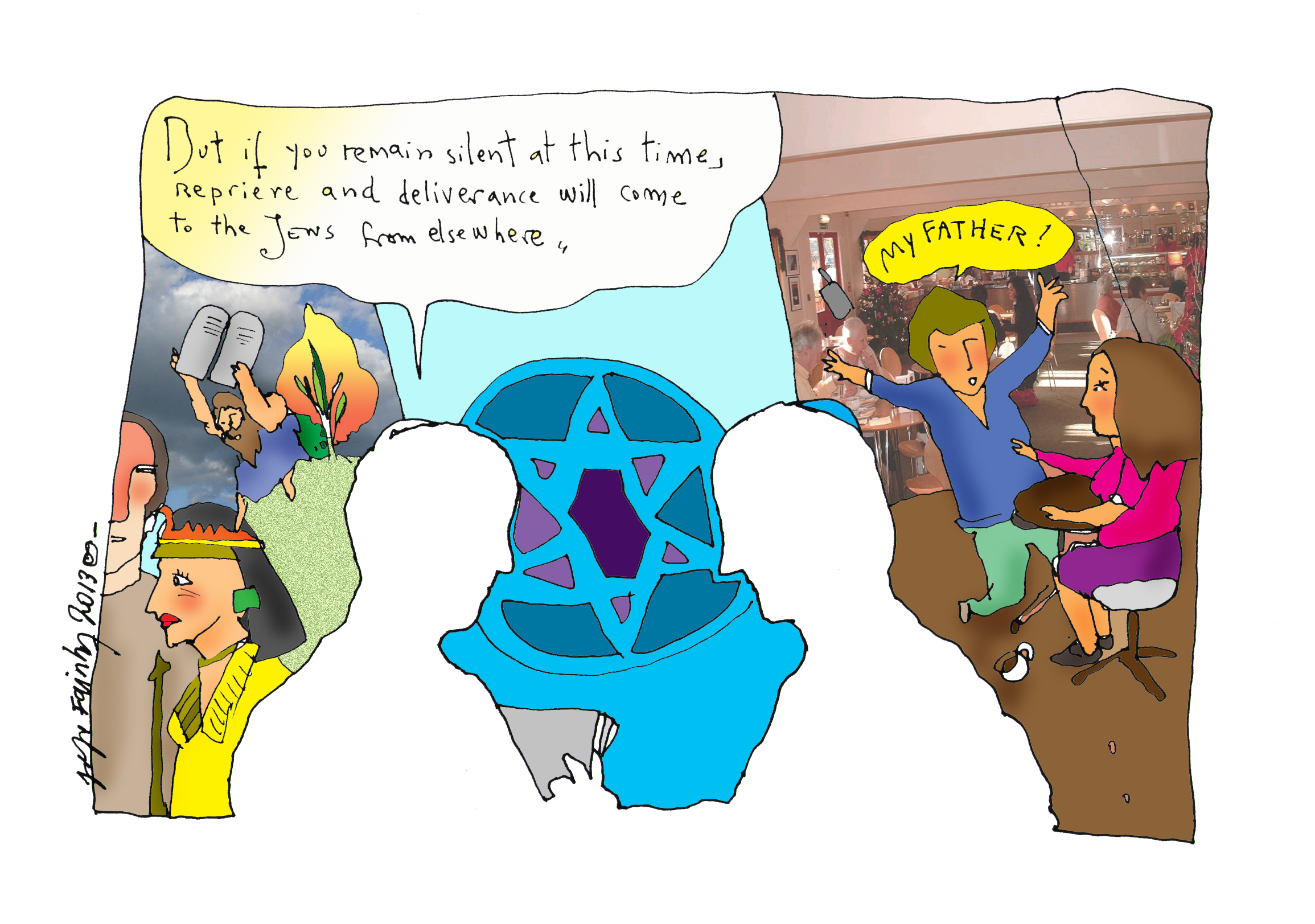Haim Watzman
God knows how Eliezer’s mind works. It goes off into other dimensions every time I try to have a serious conversation with him. That’s what happened on Purim this year. I waited through the entire reading of the megillah, the Book of Esther, to point out to him Chapter 4, verse 14, which I’d never really thought about before.

illustration by Pepe Fainberg
“Ki ‘im taharishi ba-‘et ha-zot’ revah ve-hatzalah ya‘amod le-yehudim mi-makom aher,” Eliezer reads as my finger traces the word. He translates: “‘But if you remain silent at this time, reprieve and deliverance will come to the Jews from elsewhere.’ So?”
“So this is what Mordecai says to Esther when he tells her about Haman’s plot to kill the Jews,” I point out. “That she really doesn’t have to do anything, because the Jews are going to be saved anyway.”
“Well, if that’s God’s plan,” says Eliezer, “then I guess he’s right. What’s the big deal?”






